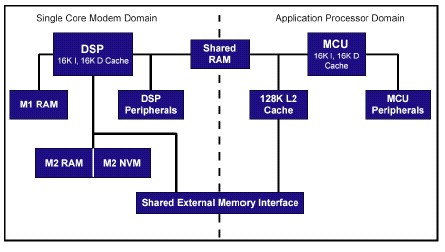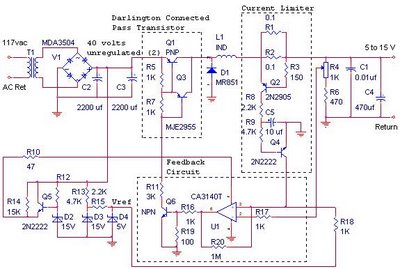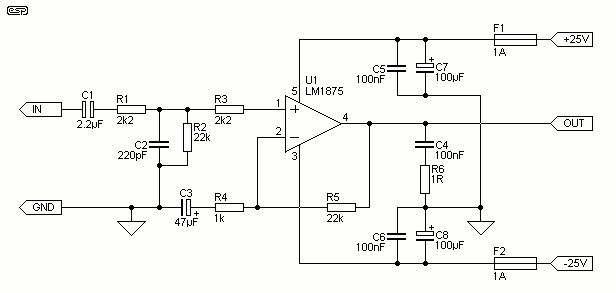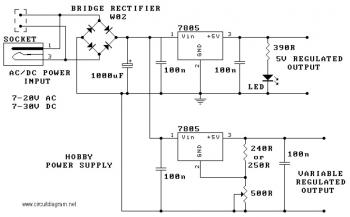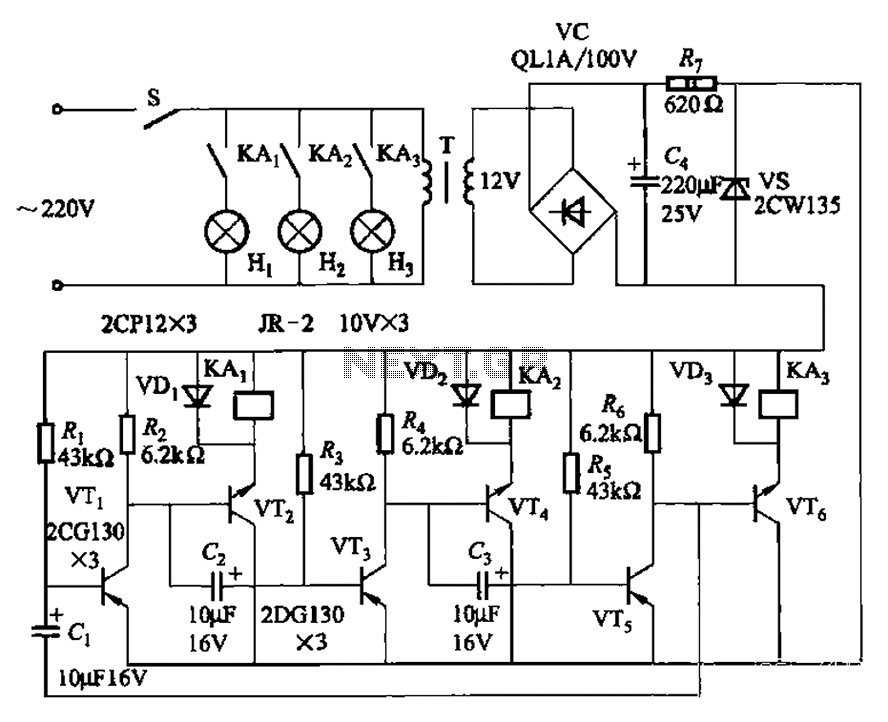
Laptop Computer Serial Port Power Booster
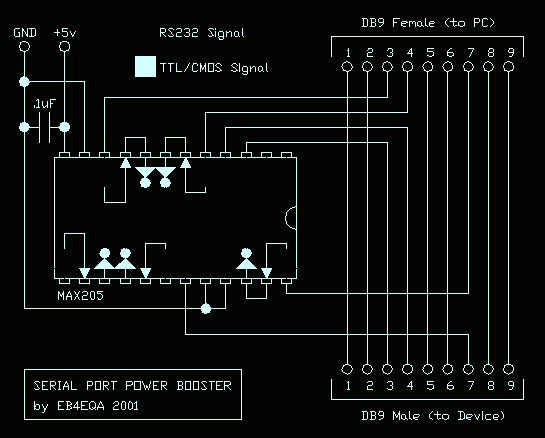
If you are looking at this page, you probably feel like I did when I tried to run a self-powered PIC programmer with my notebook computer. Yes, the serial port was the ultra-low-power type and wouldn't provide enough current to power the programmer. The problem was clear and so was the solution. I could have modified the programmer to get the power from somewhere else, but in the future I’d crash with the same wall. I needed something to interface the low-power serial port to the hungry programmer.
To address the challenge of interfacing a low-power serial port with a power-hungry PIC programmer, a specialized circuit can be designed. This circuit would serve as a power management interface that allows the serial port to effectively drive the programmer without compromising functionality.
The circuit can include a voltage regulator to step up the low voltage from the serial port to the required operating voltage for the PIC programmer. A common choice for such applications is a DC-DC boost converter, which can take the input voltage from the serial port, typically around 5V, and convert it to a higher voltage (e.g., 12V) required by the programmer.
Additionally, a microcontroller can be integrated into the circuit to monitor the power consumption and adjust the output voltage accordingly. The microcontroller can communicate with the serial port to receive data and control signals while managing power distribution to the programmer. This ensures that the programmer receives sufficient power during operation while preventing overloading of the serial port.
Protection features such as current limiting and thermal shutdown can also be incorporated to safeguard both the serial port and the programmer from potential damage due to excessive current draw. Furthermore, using opto-isolators may enhance the safety and reliability of the circuit by providing electrical isolation between the serial port and the programmer.
Overall, this interface circuit is crucial for ensuring that the low-power serial port can effectively and safely power the PIC programmer, thus resolving the issues associated with insufficient current supply.If you are looking at this page, you probably feel like I did when I tried to run a self-powered PIC programmer with my notebook computer. Yes, the serial port was the ultra-low-power type and wouldn`t provide enough current to power the programmer.
The problem was clear and so was the solution. I could have modified the programmer to get the power from somewhere else, but in the future I½¾d crash with the same wall. I needed something to interface the low-power serial port to the hungry programmer. 🔗 External reference
To address the challenge of interfacing a low-power serial port with a power-hungry PIC programmer, a specialized circuit can be designed. This circuit would serve as a power management interface that allows the serial port to effectively drive the programmer without compromising functionality.
The circuit can include a voltage regulator to step up the low voltage from the serial port to the required operating voltage for the PIC programmer. A common choice for such applications is a DC-DC boost converter, which can take the input voltage from the serial port, typically around 5V, and convert it to a higher voltage (e.g., 12V) required by the programmer.
Additionally, a microcontroller can be integrated into the circuit to monitor the power consumption and adjust the output voltage accordingly. The microcontroller can communicate with the serial port to receive data and control signals while managing power distribution to the programmer. This ensures that the programmer receives sufficient power during operation while preventing overloading of the serial port.
Protection features such as current limiting and thermal shutdown can also be incorporated to safeguard both the serial port and the programmer from potential damage due to excessive current draw. Furthermore, using opto-isolators may enhance the safety and reliability of the circuit by providing electrical isolation between the serial port and the programmer.
Overall, this interface circuit is crucial for ensuring that the low-power serial port can effectively and safely power the PIC programmer, thus resolving the issues associated with insufficient current supply.If you are looking at this page, you probably feel like I did when I tried to run a self-powered PIC programmer with my notebook computer. Yes, the serial port was the ultra-low-power type and wouldn`t provide enough current to power the programmer.
The problem was clear and so was the solution. I could have modified the programmer to get the power from somewhere else, but in the future I½¾d crash with the same wall. I needed something to interface the low-power serial port to the hungry programmer. 🔗 External reference
